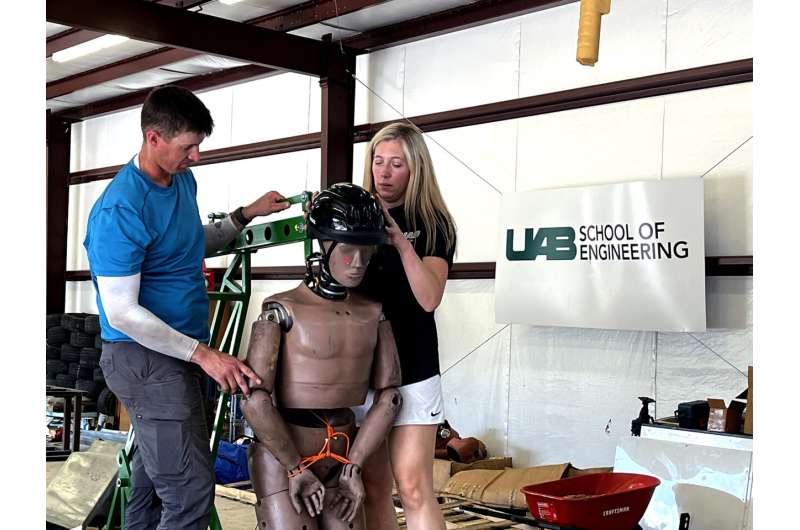Researcher examines effect of equestrian helmets on head and neck injuries

A researcher with the University of Alabama at Birmingham Sports and Exercise Medicine is presenting results of two studies on equestrian helmets at the 6th International Consensus Conference on Concussion in Sport in Amsterdam, Netherlands. The two studies shed new light on the efficacy of helmets and on the effect of terrain upon head and neck injuries.
Researchers from the UAB Marnix E. Heersink School of Medicine conducted the studies in a mechanical engineering laboratory at UAB with the use of test dummies. One study examined a standard equestrian helmet made from a polycarbonate shell over expanded polystyrene foam against newer helmet technology known as the Multi-directional Impact Protection System, or MIPS. The study looked at rotational velocity during head impact.
The test dummy was launched from an accelerated sled at a preset speed of 13.0 mph. At the end of the sled's track, a sudden stop propelled the dummy off the holding device and a tripping mechanism induced angular momentum.
"This novel method of testing takes into account the tremendous loading placed on the neck and head through the angular momentum of the body itself, particularly in a fall from a height, such as a fall from a horse," said Sara Gould, M.D., associate professor in the Department of Orthopedic Surgery.
Gould's team measured peak deceleration, duration of peak deceleration, peak rotational velocity and duration of peak rotational velocity.
"Our testing method did not detect a reduction in rotational velocity with MIPS technology compared to traditional helmets," she said. "Information gleaned from studies of this nature will contribute to the continuing improvement in helmet technology."
The team also questioned whether terrain affected helmet performance. A test dummy equipped with a traditional helmet was launched from an accelerated sled with the same sudden stop and tripping mechanism. The team tested the helmet's performance on deceleration and rotational velocity upon impact with three different surfaces: sod, sand, and a sand/fiber mixture.
"All surfaces were similar in deceleration values," Gould said. "Sand and sand-plus-fiber surfaces resulted in significantly lower rotational velocities upon helmet impact compared to sod, which could have implications for best practices in the construction of equestrian venues."





















